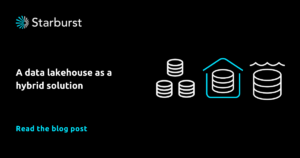What can a DBMS do?
A DBMS may support the following administrative tasks:
Configuring authentication and authorization
This includes configuring user accounts, defining access policies, and modifying restrictions. These operations allow administrators to limit access to underlying data, control user actions, and manage users in databases.
Providing data backup
A DBMS can simplify the database backup process by providing a simple interface to manage backups.
Performance tuning
By using integrated tools, a DBMS can monitor the performance of databases and enable users to tune databases by creating optimized indexes. This reduces I/O to optimize SQL queries, enabling the best performance from the database.
Data recovery
A DBMS provides a recovery platform with the necessary tools to fully or partially restore databases to their previous state.
Centralized data viewing
A DBMS provides a centralized view of data that can be accessed by multiple users in a secure manner.
Features of a DBMS
A Database Management System is a complex component of the data ecosystem and has many integrated pieces that allow it to function as intended. A typical enterprise-grade Database Management System has the following features:
Storage engine
The storage engine is the core component of a DBMS. It interacts with the file system at an OS level to store data. All queries go through the storage engine.
Query language
The DBMS must also provide an application programming interface (API) to access and modify the data, typically in the form of a query language. SQL is an example of such a query language.
Optimization engine
An optimization engine is used to parse queries and determine the best execution plan.
Query processor
The query processor acts as the intermediary between the queries written by the end-user and the database. It interprets queries and makes them into actionable commands that can be understood by the database to perform the appropriate functionality.
Support for indexing
Indexes are special lookup data structures that can be used to speed up data retrieval. An index in a database is similar to an index in the back of a book, or a card catalog at a library.
Metadata catalog
The metadata catalog can also be referred to as the system catalog or database dictionary. It is a repository for all of the database objects that have been created. This repository is updated dynamically whenever an object is created within the database. This catalog is used to verify user requests for data.
Log manager
The log manager is essential in managing data integrity, backup, and recovery. It keeps a record of all changes made to data managed by the DBMS, and ensures that the records are made efficiently and accurately.
Data utilities
A DBMS typically includes an additional set of utilities for managing activities such as reorganization, runstats, backup and copy, recovery, integrity check, load data, unload data, and repair database.
Deciding on a DBMS is based on business needs
There are many DBMS options available today, from open-source to proprietary, cloud-based to on-prem. The decision of which system to choose is largely based upon business needs.
For a comprehensive view of some of the more popular options, check out db-engines site, which ranks database management systems according to their popularity and is updated monthly.
Sure, now we’ve learned what a database is and how it is managed, it’s equally vital to learn how it is structured. The relational model is one of the oldest and most widely adopted methods for structuring a database.








